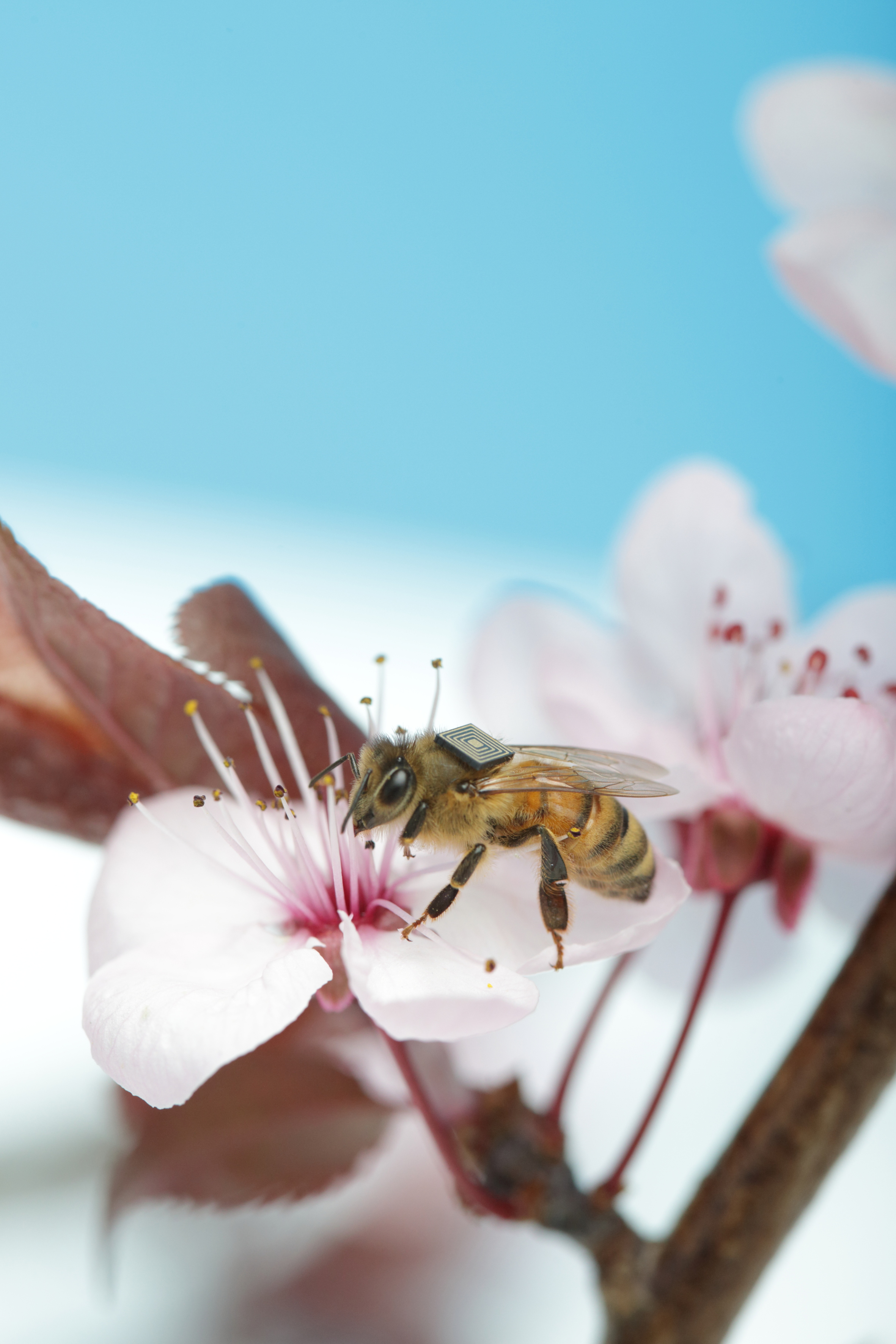
Bee with a backpack...of the sensor variety.
There is a lot of buzz around the ‘bee’utiful honey bee and its clever backpack
It has long been suspected that honey bees, being the creatures of habit that they are, simply return to their familial hive homes at the end of a long day of foraging. But it seems for some bees, laying their hat in a particular hive doesn’t necessarily make it their home.
The data already gathered from tiny sensor backpacks placed on bees suggests that for some vagabond bees, sleeping over at a different hive is a regular part of their active social lives. So what does this devil-may-care attitude to bee social structure really mean? Bee Pajama parties? Promiscuous bees? Oh bee nice!
Bee bed jumping is just one of the intriguing insights our researchers are gleaning from the tiny sensors currently monitoring the behaviour of these little swingers… erm, stingers.
Why do we care about bee-haviour?
Honey bees are essential for food production. In fact they are responsible for one third of the food we eat through the pollination services they provide. Yet the health of honey bees on a global scale is under increasing pressure.
To ensure the sustainable production of crops dependent on honey bee pollination, we must protect and improve the health of our honey bee populations.
Enter the Global Initiative for Honey bee Health (GIHH). We’re proud to be leading this international alliance of researchers in a tightly focused, well-coordinated national and international effort to better understand the diverse stresses impacting bee health.
In order to learn more about these tiny creatures and the issues causing their population collapse, we’ve glued thousands of tiny sensor chips to the backs of bees. Don’t worry – the sensors weigh in at 5 mg each – a light load easily managed by honey bees! The little sensor backpacks work in much the same way as a vehicle e-tag system, with strategically placed receivers identifying and recording the movements of individual bees as they fly in and out of their hives, and feeding the information back to an Intel minicomputer that is remotely accessible.
These high-tech micro-sensors are being used to gather a wealth of complex data which is then analysed to determine best management practices for maintaining healthy and productive honey bee colonies.
What is the data telling us?
Here are a few interesting things we’ve learnt so far about the way bees operate – including their preferred sleeping arrangements!

The proud pollinators: without the services of bees many of our favourite crops won’t be pollinated.
- By correlating bee movement data with environmental data, such as weather stats, we’ve learned that bees, like us, are not overly fond of conducting their outdoor activities in the rain. Instead they choose to forego foraging on inclement days and stay indoors instead. And who would blame them!
- The sensor system has even helped us observe differences between the routine of bees on two continents. We are tracking a colony of bees in Brazil and discovered that, unlike the lazier Tasmanian bees who prefer to sleep in and retire early, the Brazilian bees get to bed and wake up earlier, while indulging in a two hour siesta during the day.
- The data has also demonstrated that bees navigate by colour. Field experiments that involved labelling hives with different colour stickers have shown that individual bees soon identify with the colour on their hive, to the extent that they will follow their particular colour to a different hive if the stickers are moved around. This is terrific news for beekeepers who might use this information to divert healthy honey bees away from a hive in the process of collapse, simply by relocating their colour stickers.
Discoveries like these contribute to a better understanding and management of honey bee health; increase environmental and economic benefits for farmers and beekeepers; and make a valuable contribution to sustainable farming practices and food security. Not bad for a 5 mg backpack!
We’d like to gather as much data as possible through the GIHH project to help us better understand honey bee behaviour and impacts on honey bee health. This means taking the project global. We’re calling on other research institutions around the world to contribute. If you’re interested, visit our GIHH page for more info.


19th December 2016 at 10:24 am
I know this is an old post but it certainly makes me think. I wonder if one of the reasons Colony Collapse Disorder is so prevalent & can seemingly appear from now his due to bees ‘hive hopping’. Previously any apiary reference would assure you that bees stay with the same hive unless there’s a new generation forming. Segregation or treatment of individual hives may not be sufficient if potentially infected bees could be spending time in other hives.
29th August 2015 at 9:00 am
Excellent
27th August 2015 at 11:12 am
Love your wit Mr Adam Knight. Facts are interesting but you add flavour. Thanks.